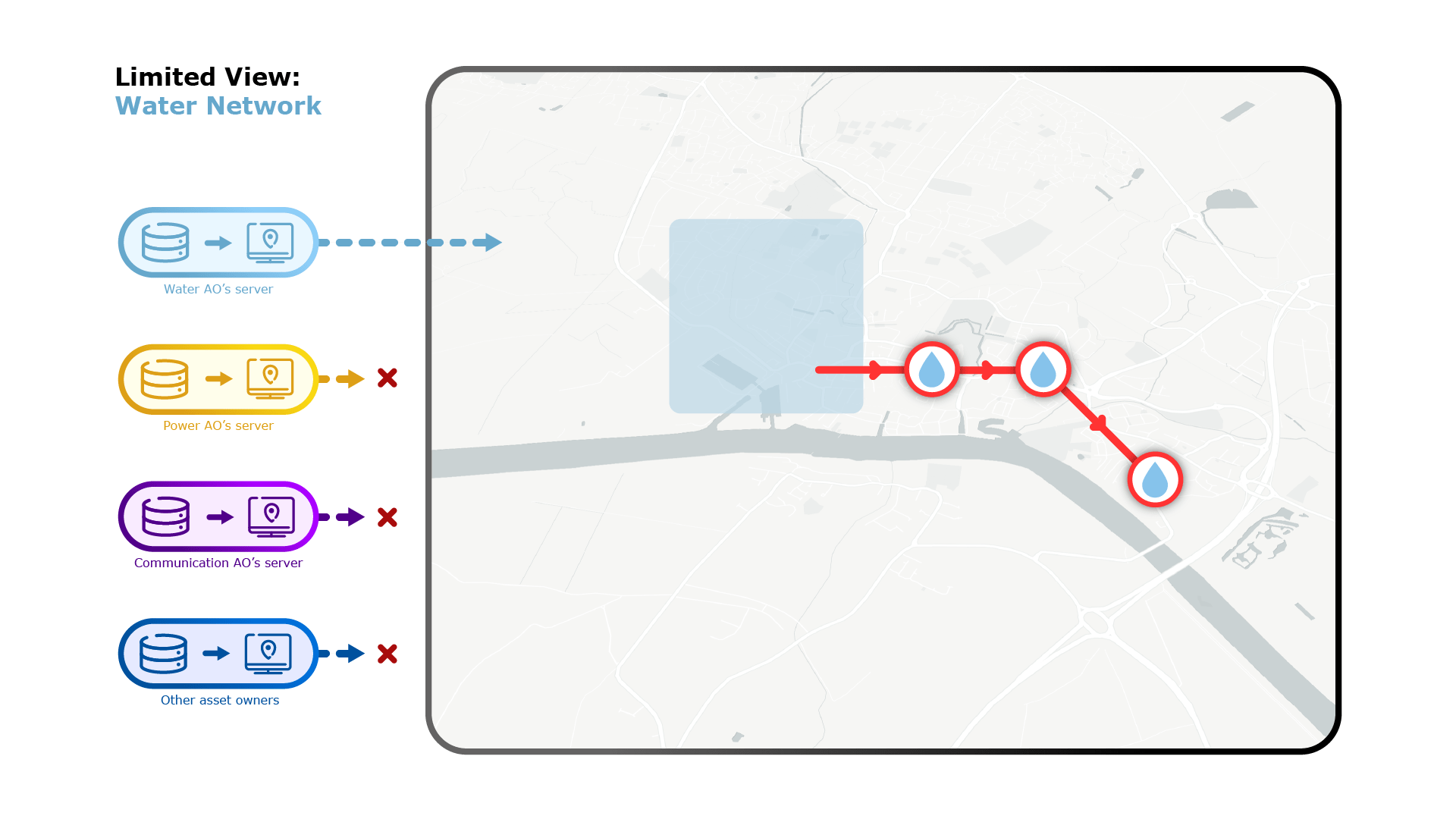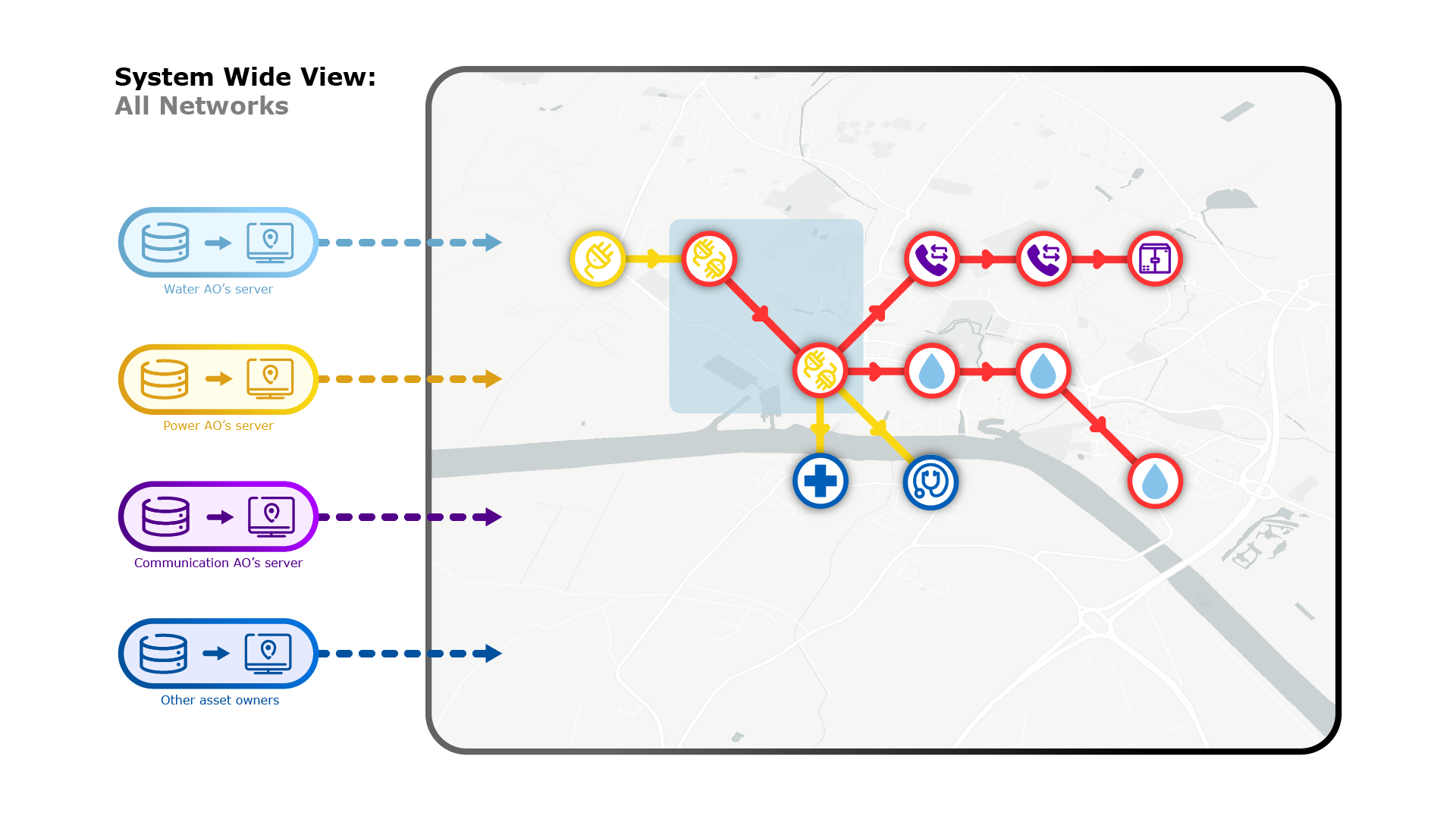Distributed Data Architecture
What is it?
In many cases, interoperability and data-sharing can unfairly imply that data owners will have to compromise on security. The distributed data architecture within The World Avatar™ dispels this myth.
Securely connect to our network of datasets and models. Retain ownership of your data whilst accessing shared insights.
What are the benefits?
Security
By physically separating data across servers, access can be controlled by data owners operating on their own systems
Extensibility
Combining the architecture with hierachical ontologies allows for rapid extensibility to new sectors and data owners
Interoperability
The nature of the architecture allows different users, using different software to pool data for greater combined outputs
Case Study - CReDo
Critical National Infrastructure is highly interconnected, and people rely on access to power, water and the internet. Increasingly, extreme weather poses a risk to this infrastructure, and failures in one network commonly cascade onto other networks.
Digitally connecting this network-of-networks allows for system-wide analysis of weaknesses, but can have potential security implications.
The distributed data architecture deployed via CReDo allowed asset owners to securely receive shared insights, without relinquishing ownership of their data.
During extreme weather, unknown failure cascades can wreak havoc on interconnected infrastructure, for example the power, water and telecoms sectors.
Asset owners may conduct their own resilience assessments, and conclude that their assets are safe. However, upstream assets that they are dependent on may not be so resilient.
Poor interoperability resulting from security concerns and legacy systems means that networks are vulnerable to unknown, cascading risks.
Failure cascades – an unknown issue
The distributed data architecture in action
In the CReDo project, the distributed data architecture was used to allow power, water and telecoms asset owners to securely connect to models. These were then also provided with climate project and flood data, as well as data from the healthcare sector.
Insights were generated, and then accessed separately by the end users.


The distributed data architecture allowed the water network to receive the same insight as before, that in the event of a flood in the area specified, their assets would be vulnerable. All this was possible whilst allowing the asset owner to:
Avoid costly data sharing agreements
Maintain full data ownership
Rapidly move from insights to interventions
For more information visit the Digital Twin Hub, or contact us.